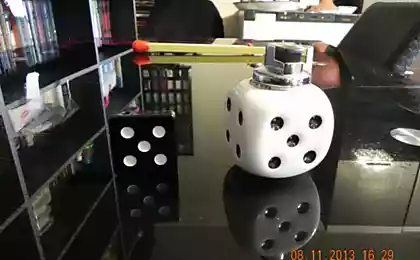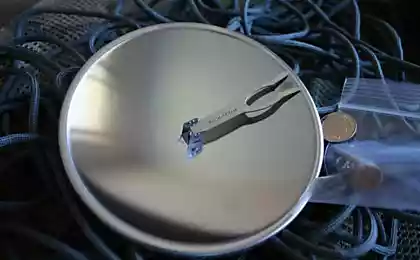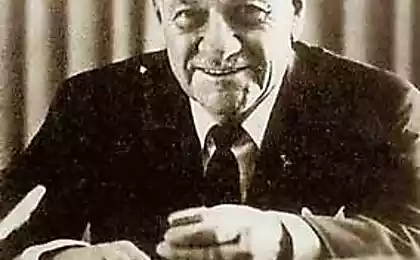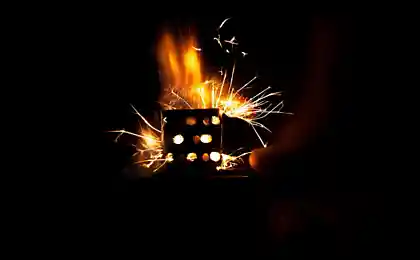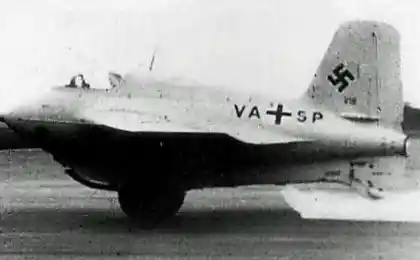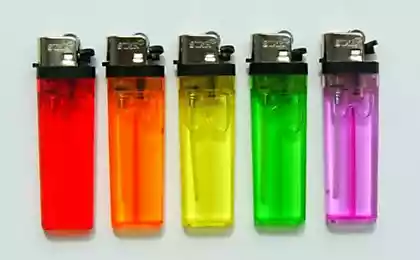1278
Methanol Lighter
One of the most unusual lighters - methanol, 1930 release. Dangerous gadget: a self-igniting lighter, running on methanol, without flint and without any moving parts!

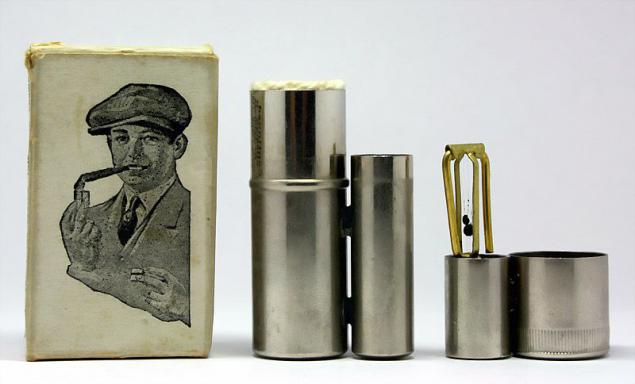
Such lighters to its appearance in the 1920s of the 20th century (such as manufactured by several different companies, and up to 1950) are required to the opening of the German chemist Johann Wolfgang Döbereiner who is essentially the father and inventor of the lighters as a device for making fire. In 1823 (wait for it - 186 years ago!) Dobereiner opened the catalytic properties of platinum, in particular, the ability of the spongy platinum or platinum black (platinum black - fine powder of platinum produced by reduction of compounds of pure platinum) to ignite the hydrogen, as well as contribute to other chemical reactions, accompanied by heating and ignition. On the basis of his discovery, he created the so-called lamp Dobereiner (hydrogen or flint), which in fact was the first in the world lighter, though damn uncomfortable and extremely dangerous:
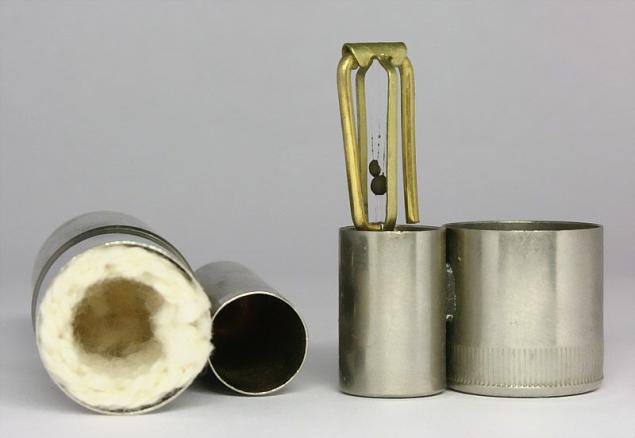
This infernal machine worked like this: the bank zinc plate was reacted with sulfuric acid, causing the hydrogen is released. When the valve is opened, hydrogen rushed out, coming into contact with the platinum plate, which is why it proceeded instant reaction heat and ignition. It is unknown how many users of such lighters were killed or maimed in the process of using it! However, this hydrogen flint and became the prototype for all future lighters - with him the era of "portable fire", which can be obtained in a relatively simple (though dangerous) way.
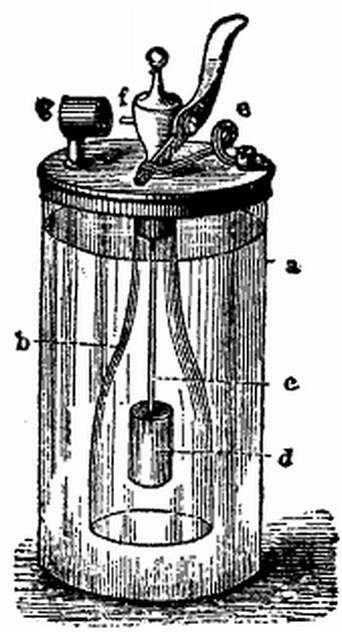
Methanol Lighter Ray-O-Lite works on the same principle Dobereiner. In a large office (which is located inside the collapsed wick) filled with methanol (aka wood alcohol). Not very much, it is enough to wick soaked well. On the cover of the lighter in a small part of it is a small brass frame on which is stretched very fine platinum wire, and on it - a pair of balls that most platinum black:
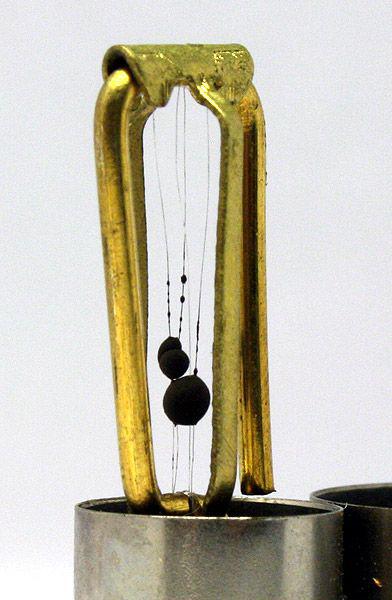
For fire slowly enough to immerse the frame with platinum balls in a large compartment with a wick. Platinum react with the methanol vapor, causing them to heat and inflammation.
Here are instructions from the box with a description of the entire process:
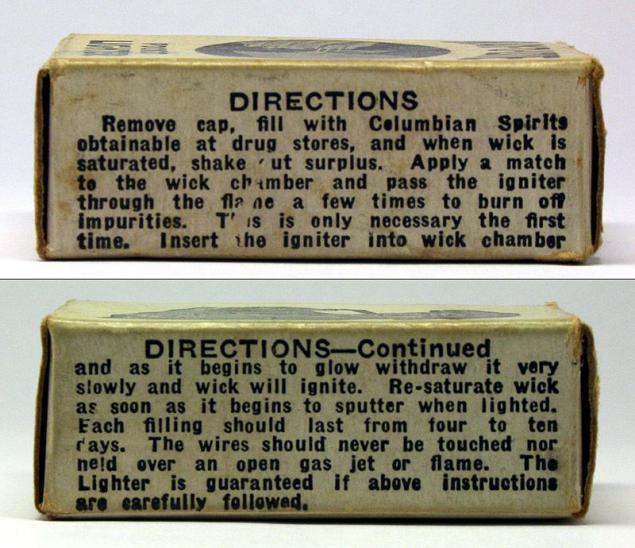
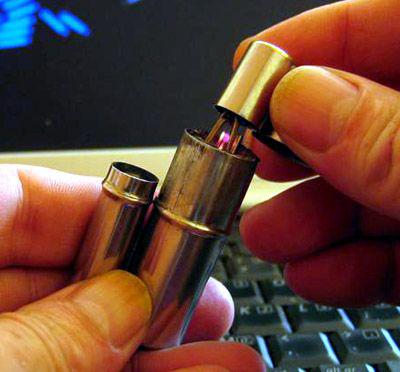
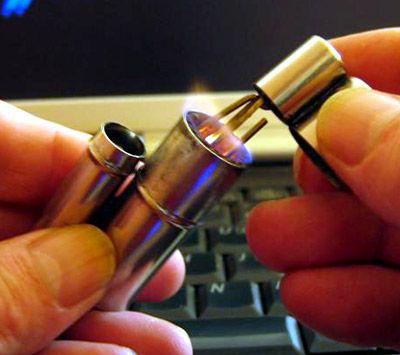


Such lighters to its appearance in the 1920s of the 20th century (such as manufactured by several different companies, and up to 1950) are required to the opening of the German chemist Johann Wolfgang Döbereiner who is essentially the father and inventor of the lighters as a device for making fire. In 1823 (wait for it - 186 years ago!) Dobereiner opened the catalytic properties of platinum, in particular, the ability of the spongy platinum or platinum black (platinum black - fine powder of platinum produced by reduction of compounds of pure platinum) to ignite the hydrogen, as well as contribute to other chemical reactions, accompanied by heating and ignition. On the basis of his discovery, he created the so-called lamp Dobereiner (hydrogen or flint), which in fact was the first in the world lighter, though damn uncomfortable and extremely dangerous:

This infernal machine worked like this: the bank zinc plate was reacted with sulfuric acid, causing the hydrogen is released. When the valve is opened, hydrogen rushed out, coming into contact with the platinum plate, which is why it proceeded instant reaction heat and ignition. It is unknown how many users of such lighters were killed or maimed in the process of using it! However, this hydrogen flint and became the prototype for all future lighters - with him the era of "portable fire", which can be obtained in a relatively simple (though dangerous) way.

Methanol Lighter Ray-O-Lite works on the same principle Dobereiner. In a large office (which is located inside the collapsed wick) filled with methanol (aka wood alcohol). Not very much, it is enough to wick soaked well. On the cover of the lighter in a small part of it is a small brass frame on which is stretched very fine platinum wire, and on it - a pair of balls that most platinum black:

For fire slowly enough to immerse the frame with platinum balls in a large compartment with a wick. Platinum react with the methanol vapor, causing them to heat and inflammation.
Here are instructions from the box with a description of the entire process:



